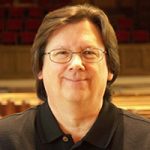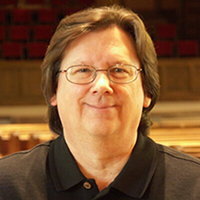A couple of years ago, I asked the members of the Church Soundcheck (CSC) discussion board for their thoughts on the key technically oriented skills that a church sound tech must have (or strive for). It resulted in a lot of great input, which I’ve whittled down into this list.
One: Have a musical ear. When we say people have “good ears,” we mean that they know what a good mix should sound like, as evidenced by their gift of using their knowledge, experience, and all of the tools at their disposal to deliver a musically balanced mix. This skill is at the core of what makes one person’s mix sound so good as compared with another.
Having a musical ear also means knowing what an acoustic guitar, or grand piano, or frankly any instrument or voice should sound like. Don’t think you have a musical ear? Most people can develop this skill.
Start by hanging around musicians as they play their instruments. Listen analytically to your favorite recordings. Listen intently to how the drums are balanced with the bass guitar, and how those lay with the keyboards or guitars, where the backing vocals sit in the mix, if the lead vocal is way out on top or more level with the backing vocals, and so on. Then learn to think that way as you build your mixes.
Two: An ability to mix artistically. A seasoned tech should be able to balance the art and science side of the task of mixing. The science part focuses on the knowledge of the technical parameters, like ensuring that the audio signals are clean, with no hums or buzzes, certainly no distortion, and so on.
The art focuses on achieving a musical balance of each element. Experienced techs will further enhance the sound character of each element through channel EQ, careful use of compression or expanding, and the tasteful use of effects like reverb or echoes.
How about being able to adjust the microphone preamp gain on an input while simultaneously adjusting the channel fader so that no one can tell that you just fixed a problem with the console gain structure? That’s a skill every tech should master.
Three: An ability to build a mix fast. There are no do-overs in live sound. If you’re mixing a contemporary worship music style, especially if it’s a complex arrangement with lots of players, you must be able to put a mix together really fast. Being able to throw together a decent monitor mix – or several of them – is a skill worth practicing. Consider “drilling” yourself on how fast you can put together a monitor mix. It will pay off!
Four: An ability to grasp console signal flow logic. Building a mix really fast also means not having to think about console signal flow. That is, within the console, what path does the signal take to get from point A to point B? What controls does it pass through on the way? A study of signal flow will reveal how the controls on your console interrelate.
For example, is the pick-off point for a pre-fade aux send pre or post EQ? Because it’s likely going to be different on the next console you mix on. Study the block diagram of the console that you use each week. Take a highlighter and trace the signal path from the mic input to the main output. Simplify the signal flow drawing and then memorize it. Get to the point of knowing it so well that you can draw it from memory.
Why? Because the day you can meet that challenge is the day you’ll start to operate the console, instead of the console operating you! You’ll be able to walk up to any console and drive it with confidence. It doesn’t matter if it’s analog or digital. It doesn’t matter if it costs $100 or $100,000. Because at their most basic level, every console operates very much the same way.
Five: An understanding of proper gain structure. Seasoned techs know that proper gain structure starts at the mic preamp. That’s where the signal-to-noise environment is established for the rest of the sound system. Then that understanding needs to be extended as to how to achieve proper gain structure for the rest of the chain between the console and the loudspeakers. What’s the advantage of building an initial mix with the channel faders at unity? This is vital to know.
Six: An ability to identify frequencies. Do you know what a 1 kHz tone or feedback sounds like versus a 100 Hz tone? Is that choir mic feeding back at 400 Hz or 800 Hz? And then what’s the best way to mitigate that feedback quickly? Will changing the channel EQ fix it, do you just need to pull the channel fader down, and for that matter, can you quickly identify which mic and which channel that the feedback is coming from?
Feedback is typically fairly easy to pinpoint and deal with. What if the issue is a “stuffy” sounding grand piano, or a backing vocal group, or an acoustic guitar? Is the best solution to move the mic, change to a different mic, or maybe adjust the channel EQ for that mic?
The ability to find the offending frequency and adjusting to improve its sound may take weeks or even years to fully develop. But enjoy the process because this is a skill that will serve you well over time.
Seven: An ability to choose the right mic — and place it in the best position to capture the desired sound. Actually, the skill may be in knowing what sound you’re going for in the first place, and then applying that knowledge and firsthand experience to choosing the right mic and technique that will deliver the expected result.
This starts with knowing how to read a polar plot and understanding the difference in mic designs (dynamic, condenser, or ribbon). Next comes knowing what types of mics are in the church’s inventory, especially their polar patterns. The real skill here is the ability to position the mic in such a way that it takes advantage of the polar pattern, aiming it to get great pickup of the intended source while also aiming the maximum rejection point to suppress sound energy from nearby instruments or monitors.
Read up on mics to better understand them, and then experiment to find out with your own ears where they work well and where maybe they don’t work so well.
Eight: An understanding of wireless system operation. It doesn’t take a ham radio license to use wireless mics (although that knowledge can be helpful), but one should understand some of the basics, such as antenna orientation, antenna types, frequency coordination, and how to prevent intermodulation distortion. Then you can teach your pastor why he should never curl that antenna on his beltpack into a little ball and stuff it in his pocket.
Nine: An ability to discern the source of a sound/system problem. It can sometimes be tough to discern if a “problem” we’re hearing is contributed by the loudspeakers, or the room acoustics, or the instrument, or even the player. I wouldn’t expect a volunteer tech to have this skill. In fact, I know many seasoned techs who’ve been mixing for years who would be hard-pressed to tell if the issue was with the acoustics or the loudspeakers. But it’s a skill worth having.
Ten: Be conversant with common terms. Working with audio can mean navigating a sea of terms, abbreviations and acronyms. Just for starters, knowing the meaning of AFL, PFL, CUE, prefade, postfade, gain, trim, pad, attenuation, pan, matrix, VCA, DCA, subgroup, bus, aux, pink noise, white noise, RF, intermodulation, CMRR, load, ohm, impedance, millivolts, dB, dBu, dBV, dBFS, SPL, RTA, TEF, FFT, Dante, AVB, crossover, being able to explain the difference between polarity and phase, even PAG-NAG, can make life as a tech easier.




















